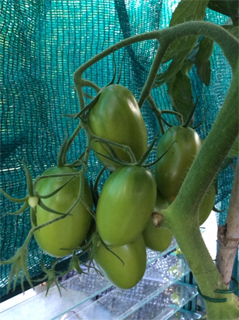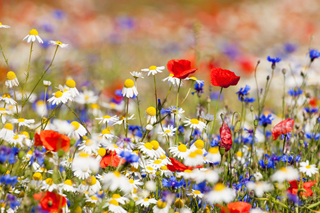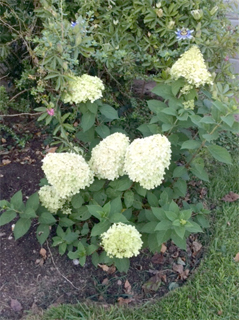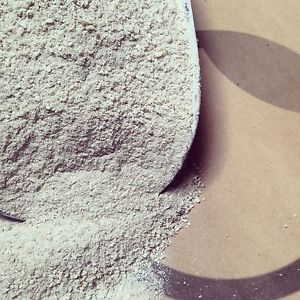 So where did that summer go exactly? If you distil it down, we probably had about 2 to 2.5 weeks of really summery weather, and the rest has been quite mediocre. In particular, the nights have been cool and damp. We don’t know about you, but our tomatoes have been slow to grow, slow to ripen for sure, and the crop is much reduced this year. There has been some blight too, reflecting the damp cool conditions which allow that particular gremlin to flourish and be carried on the wind.
So where did that summer go exactly? If you distil it down, we probably had about 2 to 2.5 weeks of really summery weather, and the rest has been quite mediocre. In particular, the nights have been cool and damp. We don’t know about you, but our tomatoes have been slow to grow, slow to ripen for sure, and the crop is much reduced this year. There has been some blight too, reflecting the damp cool conditions which allow that particular gremlin to flourish and be carried on the wind.
Still, as with all gardening, it’s a continual learning experience. If, when we encounter similar growing conditions in the future, we can reflect on this year and do things differently, then we have achieved something. And as the old adage goes, if life throws you green tomatoes, make chutney. Or something like that….it makes good Christmas presents anyway. If that’s not your thing, cross your fingers for an Indian summer.
Anyhow, September generally offers gardeners a window of opportunity for a number of pre-emptive actions; ones of which you will see the benefit next spring and summer rather than right away. There are too many to go into in detail here, but we will pick on a few you might like to try.
 The first is seed sowing. We know, that sounds a little bizarre, but just look around the garden and see what some of your plants, especially hardy annuals, are doing right now and that is setting seed. And some have long since started doing so. Now is an ideal time to sow wildflower mixes, because that’s what the wildflowers are doing themselves – look at the hedgerows and cliff paths all around the Roseland.
The first is seed sowing. We know, that sounds a little bizarre, but just look around the garden and see what some of your plants, especially hardy annuals, are doing right now and that is setting seed. And some have long since started doing so. Now is an ideal time to sow wildflower mixes, because that’s what the wildflowers are doing themselves – look at the hedgerows and cliff paths all around the Roseland.
Wildflowers prefer a poorer soil, largely free of grass, which will compete them out otherwise. They also like the soil to be disturbed a bit before they will take and germinate, and by disturbance, we mean a light rake rather than digging. Digging will likely send the seed too deep for it to find the requisite warmth and light to get going. Most wildflower seed is miniscule, and the rule of thumb is that, the smaller the seed, the less coverage (with soil or compost) it requires. Just casting the seed around without disturbing the soil will lead to low germination rates, and disappointment come late spring. This is one of those lessons we were talking about earlier; learn from our mistakes (well, mine anyway – Helen).
 Some of our hardy annuals will seed beautifully (varieties of ammi, antirrhinum, the common blue love-in-a-mist or nigella, calendula etc) in situ and it’s worth letting them do their thing just to see where they end up next year. Some, however, need a bit more tlc over the winter.
Some of our hardy annuals will seed beautifully (varieties of ammi, antirrhinum, the common blue love-in-a-mist or nigella, calendula etc) in situ and it’s worth letting them do their thing just to see where they end up next year. Some, however, need a bit more tlc over the winter.
Plants such as cornflower (centaurea), larkspur (consolida), the slightly funkier nigella varieties, and ammi majus or visnaga, if you haven’t already got some established in the garden, do well if planted under cover now, and are allowed to overwinter under cover as small plugs. They should germinate in a few weeks, and you can probably keep them in the seed cells you sow them in over winter as small plants. The key is not to overwater them during the winter months; they will rot away otherwise, as they require far less intervention from us while they are more dormant.
 Another plant which will give you great joy come Spring is the wallflower. Small plants are starting to appear in the online catalogues, and in some shops, and if you plant them now, it will give them time to get going before winter, the result of which will be lovely bushy plants ready to flower in mid late spring. They are perfectly hardy, so don’t worry about protecting them. The classic look is to plant them with tulips.
Another plant which will give you great joy come Spring is the wallflower. Small plants are starting to appear in the online catalogues, and in some shops, and if you plant them now, it will give them time to get going before winter, the result of which will be lovely bushy plants ready to flower in mid late spring. They are perfectly hardy, so don’t worry about protecting them. The classic look is to plant them with tulips.
It’s also coming up to that time when you should be planting any spring bulbs (excluding tulips, which must wait until November-time). Daffodils, crocus, hyacinth, muscari (grape hyacinth) and many others will be available and can be planted during September. Alliums and lilies, for next summer’s flowering, can also be planted now.
For each, plant at a depth relative to the size of the bulb – 3 times the height of the bulb is recommended. And in our wet Cornish climate, where the winters can leave our soil quite saturated at times, always invest in digging some gravel or horticultural grit into the bottom of the the planting hole. It will just keep the soil around the bulb better drained, and much reduce the risk of your bulb rotting. Many people plant bulbs in pots for that very reason, and that is a perfectly acceptable and quite eye-catching approach.
 Our warm and moister September soils also gives us an opportunity to plug any gap in our shrubby areas. There should be enough warmth in the soil for anything planted now to develop a bit of root growth before becoming dormant for the winter and shrubs are a great way to give your garden structure in the months when not a lot else is flowering.
Our warm and moister September soils also gives us an opportunity to plug any gap in our shrubby areas. There should be enough warmth in the soil for anything planted now to develop a bit of root growth before becoming dormant for the winter and shrubs are a great way to give your garden structure in the months when not a lot else is flowering.
Again, help the plant along by digging some root growth accelerator into the planting hole – bonemeal, or blood fish and bone, for example. We wouldn’t recommend planting any Mediterranean or southern hemisphere shrubs that need a very well-drained site now, though – our wet winter may be too much for them. Let your friendly local garden centre look after those for the winter, and buy for planting in early-mid spring instead. Unless you are putting them in a pot, of course, in which case, buy away now!
Sarah Daniel and Helen Robins

